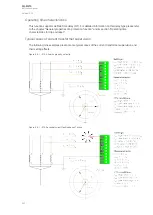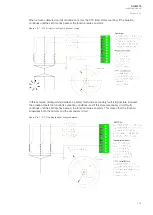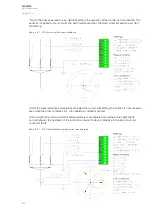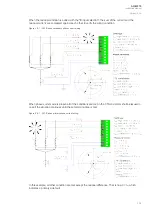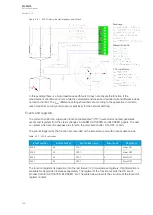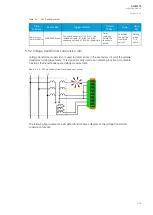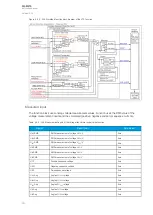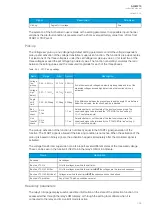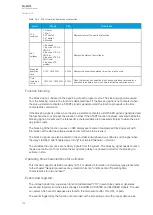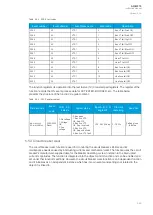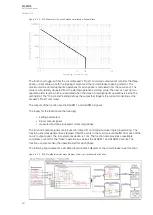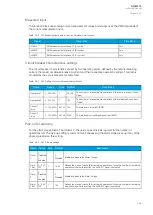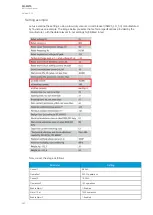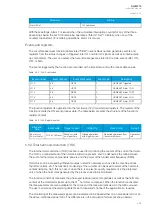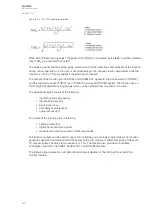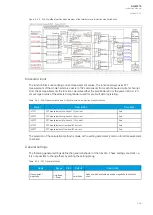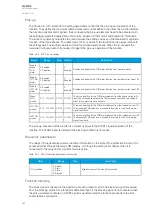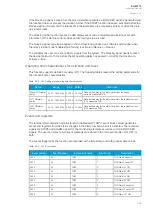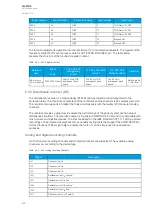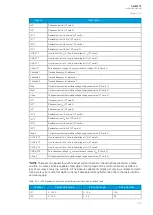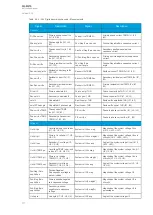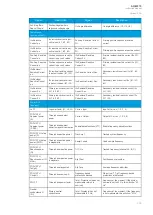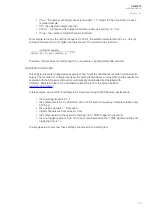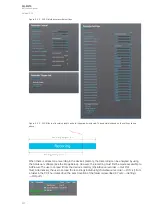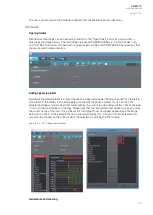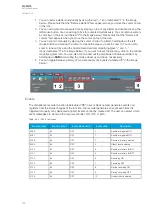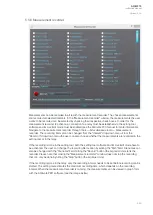
Figure. 5.5.4 - 227. THD calculation formulas.
While both of these formulas exist, the power ratio (
THD
P
) is recognized by the IEEE, and the amplitude
ratio (
THD
A
) is recognized by the IEC.
The blocking signal and the setting group selection control the operating characteristics of the function
during normal operation, i.e. the user or user-defined logic can change function parameters while the
function is running. This only applies if the alarming is activated.
The outputs of the function are the START and ALARM ACT signals for the phase current ("THDPH")
and the residual currents ("THDI01" and "THDI02") as well as BLOCKED signals. The function uses a
total of eight (8) separate setting groups which can be selected from one common source.
The operational logic consists of the following:
• input magnitude processing
• threshold comparator
• block signal chec
• time delay characteristics
• output processing.
The inputs of the function are the following:
• setting parameters
• digital inputs and logic signals
• measured and pre-processed current magnitudes
The function outputs can be used for direct I/O controlling and user logic programming. The function
generates general time-stamped ON/OFF events to the common event buffer from each of the seven
(7) output signals. The time stamp resolution is 1 ms. The function also provides a resettable
cumulative counter for the START, ALARM ACT and BLOCKED events.
The following figure presents a simplified function block diagram of the total harmonic distortion
monitor function.
A
AQ
Q-M215
-M215
Instruction manual
Version: 2.04
365

